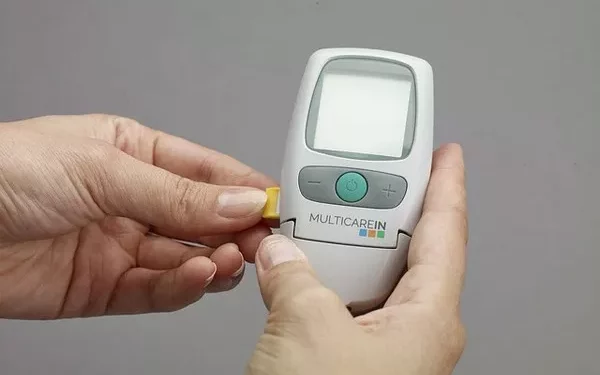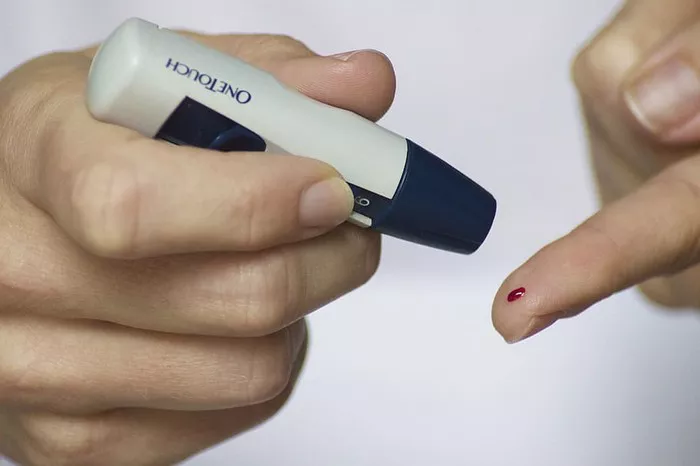Estimated Average Glucose (eAG) is a term used to describe the average blood glucose levels over a period of time, typically two to three months. It is derived from the Hemoglobin A1c (HbA1c) test, which measures the percentage of glycosylated hemoglobin in the blood. Glycosylated hemoglobin is formed when glucose in the blood binds to hemoglobin, the protein in red blood cells that carries oxygen. Since red blood cells have a lifespan of about three months, the HbA1c test provides a long-term average of blood glucose levels.
The concept of eAG is crucial because it translates HbA1c percentages into more understandable average glucose levels, expressed in milligrams per deciliter (mg/dL) or millimoles per liter (mmol/L). This translation helps patients and healthcare providers better understand and manage diabetes by providing a more tangible figure that reflects daily glucose monitoring results.
Why is eAG Important?
Understanding eAG is essential for several reasons:
Simplifies Diabetes Management: eAG provides a clear and straightforward number that patients can relate to their daily blood glucose readings. This correlation makes it easier for patients to understand their overall glucose control.
Improves Communication: eAG facilitates better communication between healthcare providers and patients. Instead of discussing abstract percentages, healthcare providers can talk about average glucose levels, which patients monitor daily.
Enhances Treatment Plans: By understanding their eAG, patients can make informed decisions about their diet, exercise, and medication. It allows for a more tailored and effective diabetes management plan.
Predicts Complications: Consistently high eAG levels indicate poor blood glucose control, which can lead to diabetes-related complications such as cardiovascular disease, neuropathy, nephropathy, and retinopathy. Monitoring eAG helps in taking timely actions to prevent these complications.
How is eAG Calculated?
eAG is calculated using a formula derived from the relationship between HbA1c and average blood glucose levels. The formula commonly used is:
𝑒𝐴𝐺 (𝑚𝑔/𝑑𝐿)=28.7×𝐻𝑏𝐴1𝑐−46.7eAG(mg/dL)=28.7×HbA1c−46.7
For instance, if a patient’s HbA1c is 7%, the eAG can be calculated as follows:
𝑒𝐴𝐺=28.7×7−46.7=154.2𝑔/𝑑𝐿eAG=28.7×7−46.7=154.2mg/dL
This formula helps translate the HbA1c percentage into an average blood glucose level that is easier for patients to understand and manage.
Normal eAG Levels
The definition of “normal” eAG can vary depending on individual health conditions and guidelines from different health organizations. However, for most non-diabetic individuals, a normal eAG level is typically between 70 and 100 mg/dL (3.9 to 5.6 mmol/L).
For individuals with diabetes, target eAG levels can differ based on age, type of diabetes, presence of diabetes-related complications, and overall health. Generally, the American Diabetes Association (ADA) recommends an HbA1c target of less than 7%, which corresponds to an eAG of approximately 154 mg/dL (8.6 mmol/L).
Factors Affecting eAG
Several factors can influence eAG levels, and understanding these factors is crucial for effective diabetes management:
Diet: The types and amounts of food consumed directly impact blood glucose levels. Carbohydrates, in particular, have a significant effect on glucose levels.
Physical Activity: Regular exercise helps lower blood glucose levels and improve insulin sensitivity. Both aerobic exercises and strength training are beneficial.
Medications: Insulin and other diabetes medications play a crucial role in managing blood glucose levels. Adherence to prescribed medication regimens is essential.
Stress: Physical and emotional stress can affect blood glucose levels. Stress management techniques such as mindfulness, relaxation exercises, and adequate sleep can help.
Illness: Acute or chronic illnesses can influence blood glucose levels. It’s important to monitor glucose levels more frequently during illness and adjust treatment as needed.
Hormonal Changes: Hormonal fluctuations, such as those during menstrual cycles or menopause, can affect blood glucose levels.
Alcohol Consumption: Alcohol can cause fluctuations in blood glucose levels, often leading to hypoglycemia. Moderation and monitoring are key when consuming alcohol.
Monitoring eAG
Effective diabetes management involves regular monitoring of blood glucose levels. There are several methods to monitor and manage eAG:
Self-Monitoring of Blood Glucose (SMBG): This involves using a glucose meter to check blood glucose levels at different times of the day. SMBG helps patients understand how their daily activities, food intake, and medications affect their blood glucose levels.
Continuous Glucose Monitoring (CGM): CGM devices provide real-time glucose readings throughout the day and night. They help identify trends and patterns in glucose levels, allowing for more precise management.
HbA1c Testing: Regular HbA1c tests, typically every three months, provide a long-term overview of blood glucose control. The results can be used to calculate eAG and assess the effectiveness of the diabetes management plan.
Interpreting eAG Results
Interpreting eAG results involves understanding how they reflect overall glucose control and identifying areas for improvement. Here’s how to interpret eAG results:
In Target Range: If the eAG is within the target range, it indicates good glucose control. Patients should continue their current management plan and make any necessary adjustments to maintain these levels.
Above Target Range: If the eAG is above the target range, it indicates high average blood glucose levels, which can lead to complications. Patients should review their diet, exercise, and medication regimen with their healthcare provider to identify areas for improvement.
Below Target Range: If the eAG is below the target range, it may indicate hypoglycemia, which can be dangerous. Patients should ensure they are consuming adequate carbohydrates and discuss potential medication adjustments with their healthcare provider.
Strategies to Achieve Normal eAG Levels
Achieving and maintaining normal eAG levels requires a comprehensive approach involving lifestyle changes, medication adherence, and regular monitoring. Here are some strategies:
Healthy Eating: Focus on a balanced diet rich in whole grains, lean proteins, healthy fats, and plenty of fruits and vegetables. Limit intake of refined sugars and high-fat foods.
Regular Exercise: Engage in regular physical activity, aiming for at least 150 minutes of moderate-intensity aerobic exercise per week, along with strength training exercises.
Medication Management: Take diabetes medications as prescribed, and work with healthcare providers to adjust dosages as needed based on blood glucose readings.
Stress Management: Practice stress-reducing techniques such as yoga, meditation, deep breathing exercises, and adequate sleep.
Routine Monitoring: Regularly monitor blood glucose levels using SMBG or CGM and schedule regular HbA1c tests to track long-term glucose control.
Education and Support: Stay informed about diabetes management through education and support groups. Working with diabetes educators and support groups can provide valuable insights and encouragement.
Technological Advances in eAG Monitoring
Recent technological advances have significantly improved the accuracy and convenience of monitoring eAG and overall diabetes management. These advancements include:
Advanced CGM Systems: Modern CGM systems provide continuous, real-time glucose readings, trend analysis, and alerts for hypo- and hyperglycemia, enhancing glucose management.
Smart Insulin Pens: These devices track insulin doses and provide data that can be synced with mobile apps to help manage insulin therapy more effectively.
Artificial Pancreas Systems: These systems integrate CGM with insulin pumps to automatically adjust insulin delivery based on glucose readings, mimicking the function of a healthy pancreas.
Mobile Apps and Telemedicine: Numerous mobile apps are available for tracking blood glucose levels, medication, diet, and physical activity. Telemedicine allows for remote consultations with healthcare providers, making diabetes management more accessible.
Challenges and Considerations
While eAG provides valuable insights into glucose control, there are challenges and considerations to keep in mind:
Individual Variability: eAG levels can vary significantly between individuals due to differences in lifestyle, genetics, and health conditions. Personalized care is crucial for effective management.
Accuracy of HbA1c: Certain conditions, such as anemia or hemoglobinopathies, can affect HbA1c results, leading to inaccurate eAG calculations. Alternative methods, such as fructosamine testing, may be needed in such cases.
Cost and Accessibility: The cost of advanced glucose monitoring systems and medications can be a barrier for some patients. Ensuring access to affordable diabetes care is essential.
Adherence to Treatment: Maintaining consistent adherence to diet, exercise, and medication can be challenging for many patients. Support from healthcare providers, family, and support groups can help improve adherence.
Future Directions in eAG Research and Management
The field of diabetes management is continually evolving, with ongoing research aimed at improving eAG monitoring and overall glucose control. Future directions include:
Development of Non-Invasive Glucose Monitoring: Research is underway to develop non-invasive glucose monitoring technologies, such as wearable sensors and optical devices, which could revolutionize diabetes management.
Personalized Medicine: Advances in genomics and precision medicine are paving the way for personalized diabetes treatment plans based on individual genetic profiles and specific health conditions.
Integration of Artificial Intelligence (AI): AI and machine learning algorithms are being used to analyze large datasets from CGM, insulin pumps, and other devices to provide personalized insights and recommendations for glucose management.
Telehealth Expansion: The expansion of telehealth services will continue to improve access to diabetes care, particularly for patients in remote or underserved areas.
Improved Diabetes Education: Enhanced education programs for patients and healthcare providers will ensure that the latest advancements in diabetes management are effectively utilized.
See also: What’s the Optimal Blood Sugar Range
Conclusion
Estimated Average Glucose (eAG) is a critical metric in the management of diabetes, providing a tangible and understandable measure of long-term blood glucose control. Understanding normal eAG levels, the factors that influence them, and strategies to achieve and maintain these levels is essential for preventing diabetes-related complications and improving overall health outcomes. With ongoing advancements in technology and research, the future of diabetes management looks promising, offering new tools and approaches to enhance the quality of life for individuals with diabetes. Through education, support, and personalized care, patients can achieve optimal glucose control and lead healthier, more fulfilling lives.
Related topics:
What Is The Best Sugar Level Range
What’s the Healthiest Blood Sugar Level: A Comprehensive Guide



























